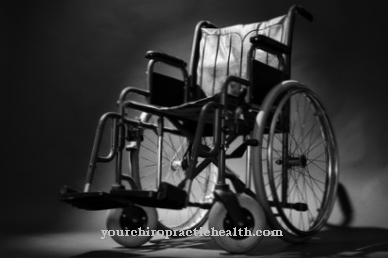As Hearing aids Experts describe acoustic aids or medical devices that are used to compensate for partial hearing loss in people. Since this also increases the social integration of the hearing impaired, the health insurance companies in Germany usually bear the costs for an individually fitted hearing aid.
What is a hearing aid?

A Hearing aid is a special aid that is able to amplify sounds on or in the ear. This enables the hard of hearing to hear better and more clearly and to participate in everyday life. Different models can be used depending on the degree of hearing loss and the type of damage.
Each hearing aid has to be individually adapted by the acoustician, as otherwise optimal function cannot be guaranteed. Nowadays hearing aids have very complex electronics and can still be kept very small so that they are often barely visible.
Nevertheless, there is still a lack of acceptance in society, which means that by no means every hearing-impaired person wears such acoustic aid.
Shapes, types & types
Hearing aids are available in a wide variety of designs. They are roughly divided into two groups. As the name suggests, so-called behind-the-ear devices are worn behind the auricle. These amplify the sound with the help of an earmold that has a sound tube.
Since these models have a relatively large amount of space for the electronics, a multiple amplification can take place and the function of the individual device can be individually adapted to the hearing impairment. In contrast, in-the-ear devices are completely in the ear canal of the affected person.
As a result, they are visually very inconspicuous, but also require a certain size or width of the auditory canal in order to be able to accommodate the entire electronics of the small devices.
Structure, function & mode of operation
Building a Hearing aid depends largely on which model is used or which device can optimally compensate for the individual hearing loss.
Basically, however, almost all hearing aids consist of the smallest possible technical device that amplifies the sound. The device is supplied with the necessary current via a rechargeable battery or a battery (this must be renewed regularly). Every hearing aid first picks up the sound and converts it into an amplified electrical impulse, which in turn is passed on to the ear. Analog devices work on the basis of a transistor, for example, while digital devices work like a small computer.
When a behind-the-ear device is worn, there is a curved housing with the amplifier behind the person's ear. This is connected to the earpiece that is worn in the ear canal via a sound tube. In-the-ear devices usually only require a much smaller housing that is completely located in the ear canal.
However, this almost completely closes the ear canal, which can, for example, lead to the affected person perceiving their own voice as unnatural.
You can find your medication here
➔ Medicines for ear complaints and hearing problemsMedical & health benefits
First and foremost, meet Hearing aids the purpose of compensating for a partial mild to severe hearing loss and partially or even completely restoring the hearing ability of the person affected. In technical terms, they are therefore not only part of the acoustic aids, but also part of the so-called medical products.
Since hearing and the closely related ability to speak is an essential factor in human coexistence, improving hearing has a social component in addition to the purely medical aspect. Hearing loss often means a certain form of isolation, as the interaction that normally takes place between people is only possible to a limited extent.

Seniors are particularly affected by this, as hearing ability often declines with age, but young people can also suffer from hearing loss. Wearing a hearing aid gives them the opportunity to take part in everyday life, establish social contacts and find their place in the job market.
However, the prerequisite is that the hearing aid has been professionally adjusted and that it is regularly serviced by professionals. Only then can it be guaranteed that the sensitive device is not damaged and that it can perform its function optimally in every situation.
























.jpg)



